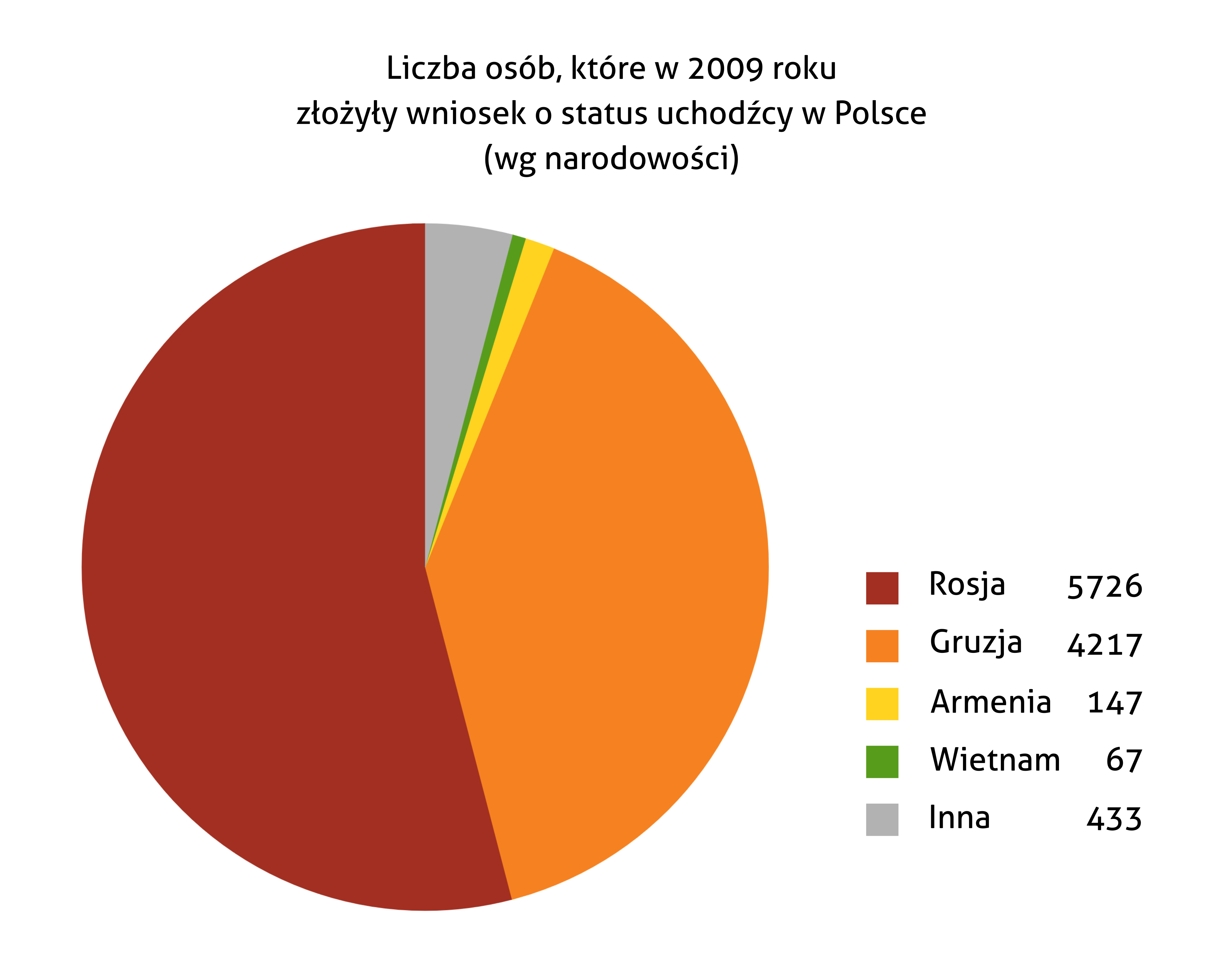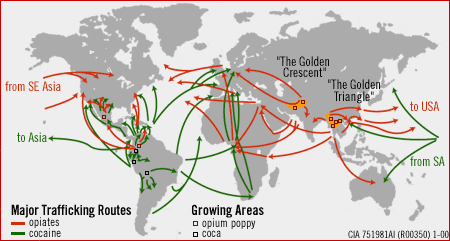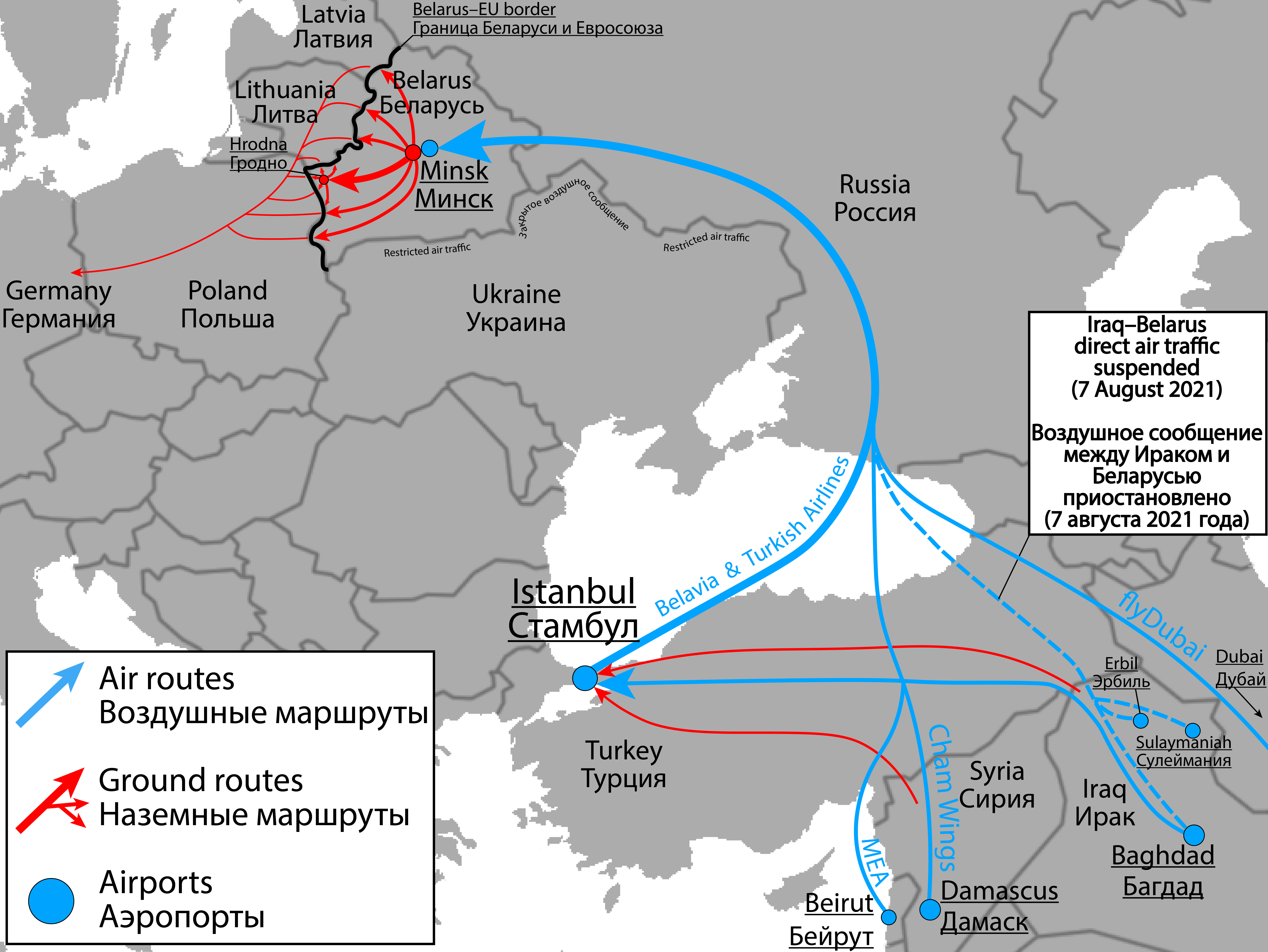|
Refugees In Poland
Refugees in Poland were, until 2022, a relatively small group. Since 1989, the number of people applying for refugee status in Poland has risen from about 1,000 to 10,000 each year; about 1–2% of the applications were approved. The majority of applications were citizens of the former Soviet Union (in particular, Chechnya and Ukraine). Following the Russian invasion of Ukraine on 24 February 2022, more than 7.2 million refugees fleeing Ukraine have been recorded across Europe, with the vast majority initially fleeing to the countries closest to its western border. According to the United Nations High Commissioner for Refugees (UNHCR), almost 1.4 million people fled to neighboring Poland. History Following World War II, Poland became a communist country, and was a major refugee destination. The communist government allowed refugees only from countries affected by "class struggle" (such as Greece, Chile or Vietnam). It is estimated that the total number of refugees and asylum see ... [...More Info...] [...Related Items...] OR: [Wikipedia] [Google] [Baidu] |
Refugee Status
A refugee, conventionally speaking, is a displaced person who has crossed national borders and who cannot or is unwilling to return home due to well-founded fear of persecution.FAQ: Who is a refugee? ''www.unhcr.org'', accessed 22 June 2021 Such a person may be called an until granted refugee status by the contracting state or the |
UNHCR
The United Nations High Commissioner for Refugees (UNHCR) is a United Nations agency mandated to aid and protect refugees, forcibly displaced communities, and stateless people, and to assist in their voluntary repatriation, local integration or resettlement to a third country. It is headquartered in Geneva, Switzerland, with over 17,300 staff working in 135 countries. Background UNHCR was created in 1950 to address the refugee crisis that resulted from World War II. The 1951 Refugee Convention established the scope and legal framework of the agency's work, which initially focused on Europeans uprooted by the war. Beginning in the late 1950s, displacement caused by other conflicts, from the Hungarian Uprising to the decolonization of Africa and Asia, broadened the scope of UNHCR's operations. Commensurate with the 1967 Protocol to the Refugee Convention, which expanded the geographic and temporal scope of refugee assistance, UNHCR operated across the world, with the bu ... [...More Info...] [...Related Items...] OR: [Wikipedia] [Google] [Baidu] |
Refugees As Weapons
"Refugees as weapons", or "Weapon of Mass Migration" is a term used to describe a hostile government organizing, or threatening to organize, a sudden influx of refugees into another country with the intent of overwhelming its borders or causing political discomfort. It often exploits the targeted country's humanitarian obligations to take in refugees and hear their asylum claims. The responsible country (or sometimes a non-state actor) usually seeks to extract concessions from the targeted country and achieve some political, military, and/or economic objective. Objectives The instrumental manipulation of population movements as political and military weapons of war, is the "refugee as weapon," has entered the world's arsenals. Human migration is becoming a viable weapon in the arsenal of many state and non-state actors pursuing non-conventional means to increase regional influence and to achieve objectives. Migration Infiltration Migration infiltration is operations amon ... [...More Info...] [...Related Items...] OR: [Wikipedia] [Google] [Baidu] |
Drug Smugglers
The illegal drug trade or drug trafficking is a global black market dedicated to the cultivation, manufacture, distribution and sale of prohibited drugs. Most jurisdictions prohibit trade, except under license, of many types of drugs through the use of drug prohibition laws. The think tank Global Financial Integrity's ''Transnational Crime and the Developing World'' report estimates the size of the global illicit drug market between US$426 and US$652billion in 2014 alone. With a world GDP of US$78 trillion in the same year, the illegal drug trade may be estimated as nearly 1% of total global trade. Consumption of illegal drugs is widespread globally and it remains very difficult for local authorities to thwart its popularity. History The government of the Qing Dynasty issued edicts against opium smoking in 1730, 1796 and 1800. The West prohibited addictive drugs throughout the late 19th and early 20th centuries. Beginning in the 18th century, British merchants from ... [...More Info...] [...Related Items...] OR: [Wikipedia] [Google] [Baidu] |
Human Trafficker
Human trafficking is the trade of humans for the purpose of forced labour, sexual slavery, or commercial sexual exploitation for the trafficker or others. This may encompass providing a spouse in the context of forced marriage, or the extraction of organs or tissues, including for surrogacy and Ovum, ova removal. Human trafficking can occur within a country or trans-nationally. Human trafficking is a crime against the person because of the violation of the victim's rights of movement through coercion and because of their commercial Exploitation of labour, exploitation. Human trafficking is the trade in people, especially women and children, and does not necessarily involve the movement of the person from one place to another. People smuggling (also called ''human smuggling'' and ''migrant smuggling'') is a related practice which is characterized by the consent of the person being smuggled. Smuggling situations can descend into human trafficking through coercion and exploitation ... [...More Info...] [...Related Items...] OR: [Wikipedia] [Google] [Baidu] |
Alexander Lukashenko
Alexander Grigoryevich Lukashenko (as transliterated from Russian language, Russian; also transliterated from Belarusian language, Belarusian as Alyaksand(a)r Ryhoravich Lukashenka;, ; rus, Александр Григорьевич Лукашенко, Aleksandr Grigoryevich Lukashenko, ɐlʲɪkˈsandr ɡrʲɪˈɡorʲjɪvʲɪtɕ lʊkɐˈʂɛnkə. In English language, English, both transliterations are used, and his first name is often anglicized to ''Alexander''. born 30 August 1954) is a Belarusian politician who has been the first and only president of Belarus since the establishment of the office on 20 July 1994, making him the List of current state leaders by date of assumption of office, longest-sitting European president. Before his political career, Lukashenko worked as director of a state farm (''sovkhoz''), and served in the Soviet Border Troops and in the Soviet Army. Lukashenko continued state ownership of key industries in Belarus after the dissolution of the Sov ... [...More Info...] [...Related Items...] OR: [Wikipedia] [Google] [Baidu] |
Belarusian President
Belarusian statehood can be traced to the medieval Principality of Polotsk. From the 13th century, the lands of modern-day Belarus became part of the Grand Duchy of Lithuania which later evolved into the Polish–Lithuanian Commonwealth. In the 19th century, the territories of present-day Belarus together with Lithuania formed the Northwestern Krai of the Russian Empire. At the beginning of the 20th century, the short-lived Belarusian People's Republic was proclaimed, and in 1922, the Byelorussian SSR was a founding member of the Soviet Union. West Belarus remained under Second Polish Republic, Polish rule until 1939 when it was annexed by the Soviet Union. In 1991, Belarus declared its independence from the Soviet Union. Pre-Rurikid rulers Non-dynastic * Vespasius *Ragvalod of Polotsk, Ragvalod I (? - 980) Rurikid Belarus In 978, with the marriage of Rogneda of Polotsk, Rogneda, daughter of Ragvalod, with Vladimir I of Kiev, the Principality of Polotsk became property of the Ru ... [...More Info...] [...Related Items...] OR: [Wikipedia] [Google] [Baidu] |
2021–2022 Belarus–European Union Border Crisis
The 2021–2022 Belarus–European Union border crisis is a migrant crisis consisting of an influx of several tens of thousands of immigrants, primarily from Iraqi Kurdistan, with smaller groups hailing from elsewhere in Asia and from parts of Africa, to Lithuania, Latvia, and Poland via those countries' borders with Belarus. The crisis was triggered by the severe deterioration in Belarus–European Union relations, following the 2020 Belarusian presidential election, the 2020–2021 Belarusian protests, the Ryanair Flight 4978 incident and its sanctions, and the attempted forced repatriation of Olympic sprinter Krystsina Tsimanouskaya from Tokyo, Japan. The crisis began sometime around July 7, 2021, when Belarusian president Alexander Lukashenko threatened to "flood" the EU with human traffickers, drug smugglers, and armed migrants. Later, Belarusian authorities and state-controlled tourist enterprises, together with some airlines operating in the Middle East, started pr ... [...More Info...] [...Related Items...] OR: [Wikipedia] [Google] [Baidu] |
Poland In The European Union
Poland has been a member state of the European Union since 1 May 2004, with the Treaty of Accession 2003 signed on 16 April 2003 in Athens as the legal basis for Poland's accession to the EU. The actual process of integrating Poland into the EU began with Poland's application for membership in Athens on 8 April 1994, and then the confirmation of the application by all member states in Essen from 9–10 December 1994. Poland's integration into the European Union is a dynamic and continuously ongoing process. Comparison Early relations between Poland and the EU (1988–1993) Diplomatic relations between Poland and the European Economic Community began on 16 September 1988. A year later, on 19 September 1989, during the first visit of the Chairman of the Committee of Ministers of the EEC to Poland, an agreement was signed on trade and commercial and economic cooperation in Warsaw. Changes in Polish politics during and after 1989 allowed diplomatic talks regarding Poland's par ... [...More Info...] [...Related Items...] OR: [Wikipedia] [Google] [Baidu] |
Western Europe
Western Europe is the western region of Europe. The region's countries and territories vary depending on context. The concept of "the West" appeared in Europe in juxtaposition to "the East" and originally applied to the ancient Mediterranean world, the Roman Empire (Western Roman Empire and Eastern Roman Empire), and medieval "Christendom" (Western Christianity and Eastern Christianity). Beginning with the Renaissance and the Age of Discovery, roughly from the 15th century, the concept of ''Europe'' as "the West" slowly became distinguished from and eventually replaced the dominant use of "Christendom" as the preferred endonym within the region. By the Age of Enlightenment and the Industrial Revolution, the concepts of "Eastern Europe" and "Western Europe" were more regularly used. Historical divisions Classical antiquity and medieval origins Prior to the Roman conquest, a large part of Western Europe had adopted the newly developed La Tène culture. As the Roman domain ... [...More Info...] [...Related Items...] OR: [Wikipedia] [Google] [Baidu] |
Afghanistan
Afghanistan, officially the Islamic Emirate of Afghanistan,; prs, امارت اسلامی افغانستان is a landlocked country located at the crossroads of Central Asia and South Asia. Referred to as the Heart of Asia, it is bordered by Pakistan to the Durand Line, east and south, Iran to the Afghanistan–Iran border, west, Turkmenistan to the Afghanistan–Turkmenistan border, northwest, Uzbekistan to the Afghanistan–Uzbekistan border, north, Tajikistan to the Afghanistan–Tajikistan border, northeast, and China to the Afghanistan–China border, northeast and east. Occupying of land, the country is predominantly mountainous with plains Afghan Turkestan, in the north and Sistan Basin, the southwest, which are separated by the Hindu Kush mountain range. , Demographics of Afghanistan, its population is 40.2 million (officially estimated to be 32.9 million), composed mostly of ethnic Pashtuns, Tajiks, Hazaras, and Uzbeks. Kabul is the country's largest city and ser ... [...More Info...] [...Related Items...] OR: [Wikipedia] [Google] [Baidu] |
Yugoslavia
Yugoslavia (; sh-Latn-Cyrl, separator=" / ", Jugoslavija, Југославија ; sl, Jugoslavija ; mk, Југославија ;; rup, Iugoslavia; hu, Jugoszlávia; rue, label=Pannonian Rusyn, Югославия, translit=Juhoslavija; sk, Juhoslávia; ro, Iugoslavia; cs, Jugoslávie; it, Iugoslavia; tr, Yugoslavya; bg, Югославия, Yugoslaviya ) was a country in Southeast Europe and Central Europe for most of the 20th century. It came into existence after World War I in 1918 under the name of the ''Kingdom of Serbs, Croats and Slovenes'' by the merger of the provisional State of Slovenes, Croats and Serbs (which was formed from territories of the former Austria-Hungary) with the Kingdom of Serbia, and constituted the first union of the South Slavic people as a sovereign state, following centuries in which the region had been part of the Ottoman Empire and Austria-Hungary. Peter I of Serbia was its first sovereign. The kingdom gained international recog ... [...More Info...] [...Related Items...] OR: [Wikipedia] [Google] [Baidu] |








